Bittensor belongs to the category of "Darwinian AI," an AI that evolves through natural selection.
Author: 0xJeff
Compiled by: Deep Tide TechFlow
Cryptocurrency has always been exciting for me, with new things to learn all the time. I am naturally curious and enjoy asking technical people many seemingly silly questions to gain insights and learn from their valuable experiences. Artificial intelligence is no exception; in fact, as Web2 tech giants continuously improve their models, large applications are rapidly launching AI-driven use cases.
@canva has launched AI tools that allow non-technical artists and creators to easily build interactive experiences and enhance their creations through AI;
@YouTube has introduced a new AI tool that allows creators to generate background music for videos;
Ride-hailing companies like Grab are deploying agent AI to support collaboration between merchants and driver partners;
E-commerce companies like Lazada are helping to introduce generative AI tools to assist sellers with sales, marketing, and customer service.
There are countless similar examples. The practical applications of using generative AI and agent AI to improve workflows are being increasingly adopted by businesses and retail users. The benefit of these technologies is that they are easily accessible—you can find free or low-cost solutions anywhere, and the benefits far outweigh the financial costs.
However, people often overlook the hidden trade-offs when using these AI products, such as:
Who owns your data?
Can someone steal your ideas and create a competing product?
Is the platform secure? Will your data be leaked?
If the platform goes down (as happened with AWS), will it disrupt your business? Is customer funding at risk?
Can you always access your platform? Do you need to verify your identity? If the platform shuts down, do you still own your products or business?
There are many other questions (if you haven't read it yet, I discussed this topic in more detail in a previous article).
Centralized participants hold concentrated power and can make decisions that may (unintentionally) have a significant impact on your life. You might think this is inconsequential—perhaps you don't use these tools often, or you trust these companies to act in the best interests of users. That's fine. You might even want to invest in these AI startups because they are entering a massive addressable market. But the problem is—you can't invest. Unless you are in @ycombinator or a top venture capital firm, you cannot access these deals.
On the other hand, in the Web3 AI space, there are many investable AI ecosystems where teams are working hard to bring decentralized AI products and services to users. One of the top investable decentralized AI ecosystems is @opentensor (Bittensor).
Bittensor: Darwinian AI
Bittensor falls under the category of "Darwinian AI"—AI that evolves through natural selection. You can think of it as the AI version of "The Hunger Games," where each subnet has its own "Hunger Games," and the "miners" are the tributes (or participants). They compete on specific tasks using their models and data. Only the strongest models (the best performers) will be rewarded. Weaker models are either replaced or evolve (through training, tuning, or learning from others). Over time, this will form a more robust, diverse, and high-performance AI ecosystem.
What is particularly exciting about Bittensor is its designed competition and incentive mechanisms, aimed at aligning incentives among different stakeholders. I outlined the challenges faced by Web3 AI agent teams in the tweet below…
In short, the current agent tokens are beneficial for speculators and teams, serving as tools for hype, but they are ineffective in acquiring and retaining users with tokens, and they are especially poor at retaining talent (developers, founders, etc.) when prices drop.

Bittensor addresses this issue through a market-driven mechanism that allocates the issuance of $TAO to subnets, thereby incentivizing and supporting team operations. The market determines which subnets receive more issuance by staking $TAO in these subnets. Once staked, $TAO is converted into Alpha subnet tokens. The more people stake, the higher the price of Alpha tokens, and the more issuance (in the form of Alpha tokens) you will receive.
The issuance plan for $TAO is very similar to BTC, with a fixed supply of 21 million tokens and halving every four years (7,200 $TAO are issued to subnets daily). The first $TAO halving is expected to occur around January 5, 2026, when the circulating supply will reach 10.5 million tokens.
Why This Matters to Investors
I won't delve into technical issues here—I just want to share why I believe Bittensor is one of the most exciting ecosystems from a trading/investment perspective.
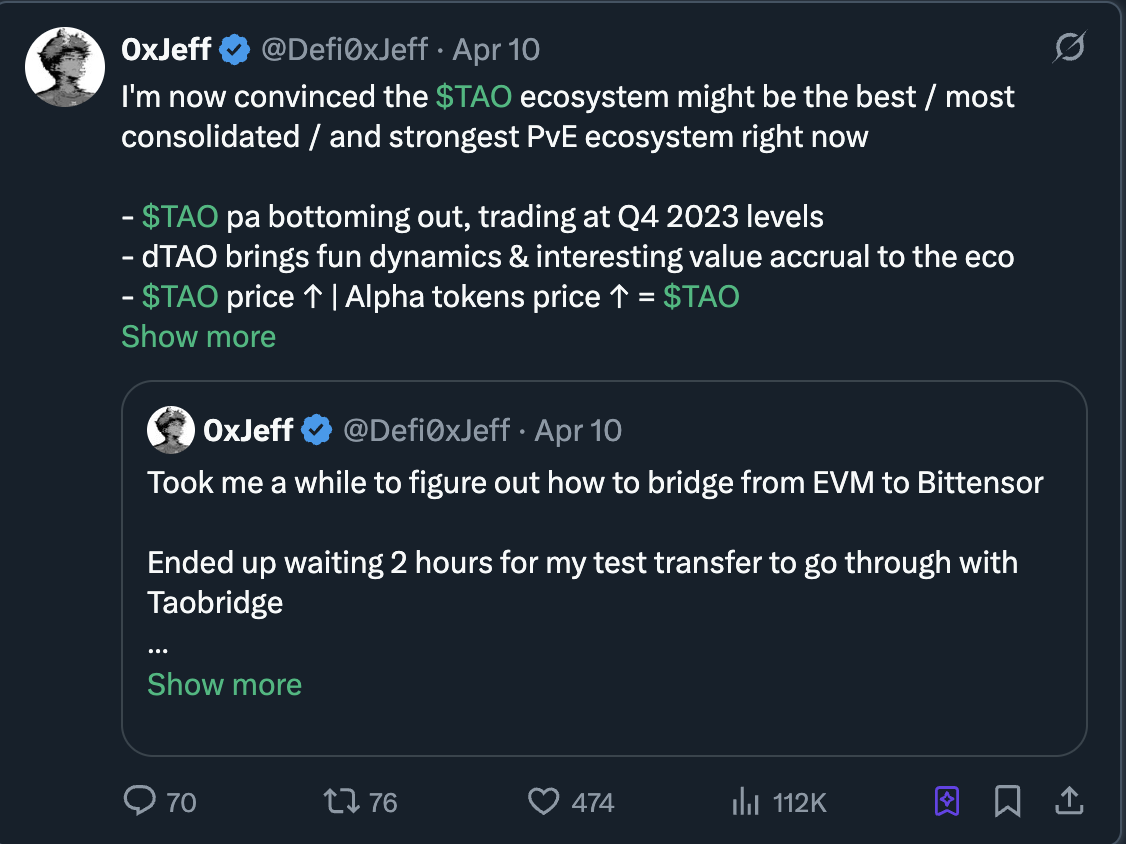
In addition to the dynamics mentioned above, trading Alpha subnet tokens is akin to simultaneously trading and "mining."
This is because whenever the price of Alpha tokens rises, you not only enjoy the benefits of the price increase but also receive the issuance of $TAO (in the form of Alpha tokens).
If a subnet performs well and rises in ranking, your initial $TAO holdings will experience significant price increases and a large increase in issuance. The earlier you stake your $TAO in a subnet, the higher your annual percentage yield (APY) will be (because the market has not yet noticed, so there are fewer stakers in the subnet and less $TAO).
dTAO vs Solidly
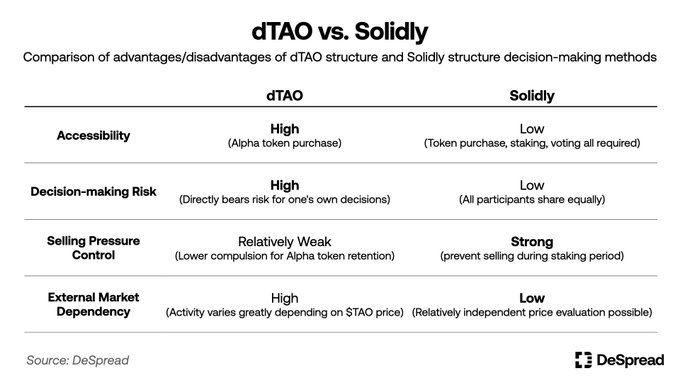
Source: @DeSpreadTeam
Solidly's ve(3,3) mechanism requires long-term locking and continuous participation. Unreasonable issuance (voting for the wrong liquidity pools) results in losses shared by all holders (issuance is sold off, causing prices to drop for all token holders).
In contrast, dTAO does not require long-term locking, so anyone can enter and exit at any time, but entering (staking in a subnet) requires a significant amount of due diligence/self-research. Investing in the wrong subnet can lead to substantial losses (as people can easily exit without lock-up periods or other restrictions).
But, Jeff, the fully diluted valuation (FDV) is so high! How can we invest in subnets with a market cap of over $500 million?
FDV may not be the appropriate metric to consider here, as subnets are still in the early stages, so market cap (MC) may be more suitable (if you are trading in the short to medium term). If you are concerned about inflation, it is worth understanding the 18%/41%/41% ratio—these are the issuances allocated to subnet owners, validators, and miners, respectively (in the form of Alpha tokens). As a staker/Alpha token holder, you benefit from the 41% portion allocated to validators because you delegate $TAO to them when you stake.
Many subnet owners continue to hold the Alpha tokens they receive from issuance to show confidence, and many engage in active dialogue with validators and miners to encourage them to remain optimistic about the market and not to sell off tokens in large quantities (you can explore this information on taostats).
Looking at the big picture, the following chart is one of the best to illustrate the trends in the Bittensor ecosystem.

Source: taoapp
Since the launch of dTAO in February, the %TAO in Roots (the OG subnet managing the Bittensor incentive system) has been continuously decreasing, while the %TAO in subnets has been continuously increasing. This means that stakers/investors are becoming more adventurous (staking on the Root network yields about 20-25% conservative annual returns, and there is no price increase for Alpha subnet tokens on Root). This trend aligns with the speed at which subnet teams are launching products. Since the launch of dTAO, teams need to build publicly, develop products that users want, iterate quickly, and find product-market fit to attract users and rapidly generate real-world utility with actual revenue. Since I entered this ecosystem, I have felt that the speed at which teams are launching products is much faster than in other ecosystems (due to competition and incentive distribution).
This leads us to the subnets and their unique investable decentralized AI (DeAI) use cases.
Leading Subnets and Use Cases
The team considered to rank first in product-market fit (PMF) is @rayon_labs, which focuses on serving everyday users. The team executes professionally and continuously demonstrates the ability to build publicly, including SN64 (Chutes), SN56 (Gradients), and SN19 (Nineteen).
Chutes—provides infrastructure to easily deploy your AI in a serverless manner. The recent AWS outage is the best case for why we need this service; if you rely on centralized vendors, an outage can cause your AI applications to go down due to a single point of failure (leading to potential financial loss/exploitation).

Gradients—anyone (even without programming knowledge) can train their own AI models on Gradients (for professional use cases, image generation, custom LLMs). The recently launched v3 version is cheaper than its peers.

Nineteen — Provides a fast, scalable, and decentralized AI inference platform (anyone can use it for text and image generation as it is significantly faster than its peers).

Additionally, Rayon is launching the Squad AI agent platform, an easy-to-use drag-and-drop node-style AI agent building platform that has garnered significant attention in the community.
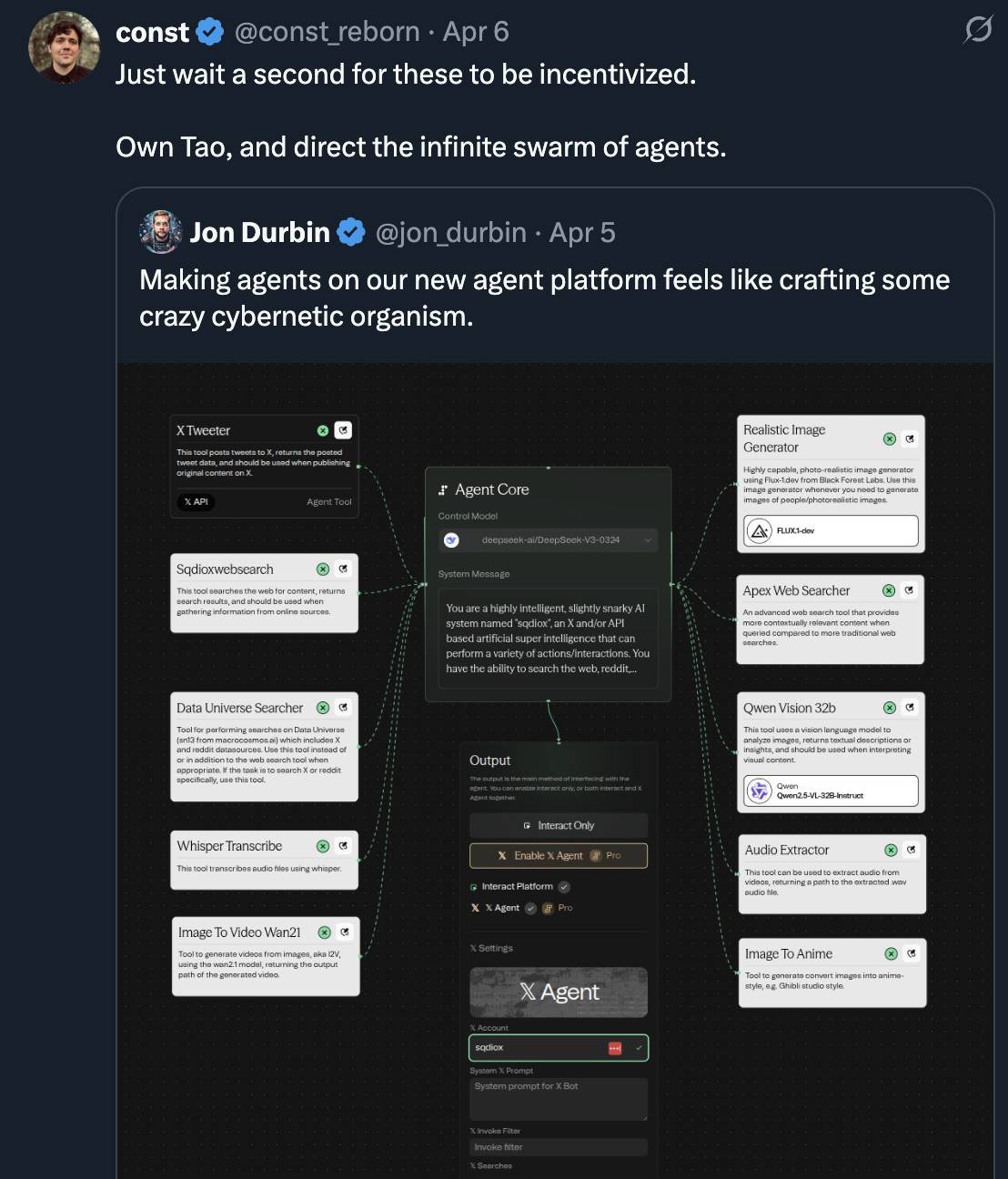
The three subnets collectively hold over one-third of the $TAO issuance—this demonstrates the team's ability to build publicly and deliver high-quality products that users need (Rayon is praised as the top team by many subnet owners).
Gradients has grown 13 times in a month (current market cap of $32 million)
Chutes has grown 2.3 times (market cap of $63 million)
Nineteen has grown 3 times (market cap of $18 million)
This trend does not seem to be stopping anytime soon, especially as the adoption rate of Chutes (currently the top-ranked subnet) continues to rise.
In addition to Rayon Labs' subnets, there are many interesting teams—including protein folding, deepfake/AI content detection, 3D modeling, trading strategies, and role-playing LLMs. I have not delved into everything yet, but I think the most relevant is the subnet under the "prediction system" (taopill).
SN41 @sportstensor
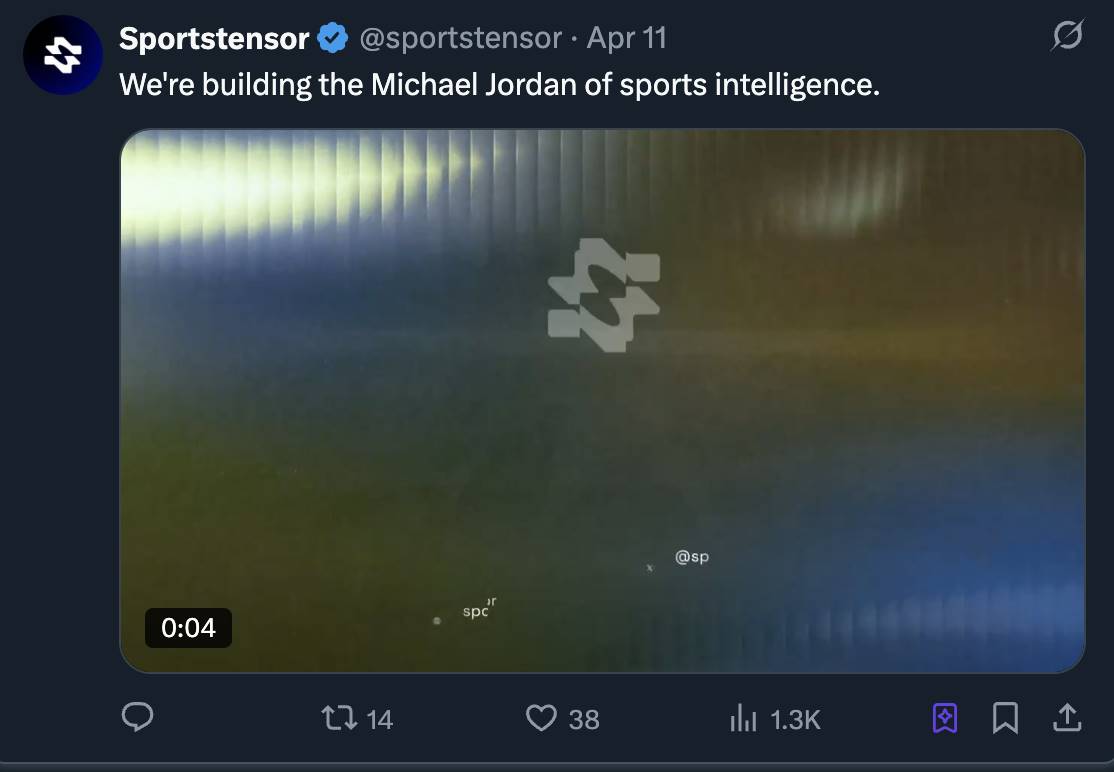
Many people may know them through @AskBillyBets; Sportstensor is an intelligent system that supports Billy's decision-making (Billy's main team is @ContangoDigital, a venture capital firm investing in decentralized AI (DeAI) and Bittensor subnet validators/miners).
The product of SN41—the Sportstensor model—is very interesting. It is a competition among miners to have the best model and dataset to predict the outcomes of sports events.
For example: In the latest NBA season, if you follow the crowd and bet on popular picks, you will experience about a 68% accuracy/win rate. Does this mean that everyone betting on popular picks made a lot of money? Not at all; in fact, they lost money. If you bet $100 on each popular pick, you would end up with a negative return on investment, losing about $1,700.
While popular picks often have better win rates, their odds are lower, meaning that even if you bet correctly, you win less money. People often focus on their favorites, leading to low odds for underdogs, which means if you bet on the right underdog, there is a lot of money to be made.
This is where the Sportstensor model comes into play. Miners use their own machine learning models (such as Monte Carlo, random forests, linear regression, etc.) and their own data (free or proprietary) to achieve the best results. Sportstensor then averages/mediates these results and uses them to identify market advantages.
The actual odds in the market are 25:75. The model might show odds of 45:55. This 15-point gap represents the advantage. If the model finds many such advantages, you do not need a high win rate to start accumulating positive returns on investment over the long term.
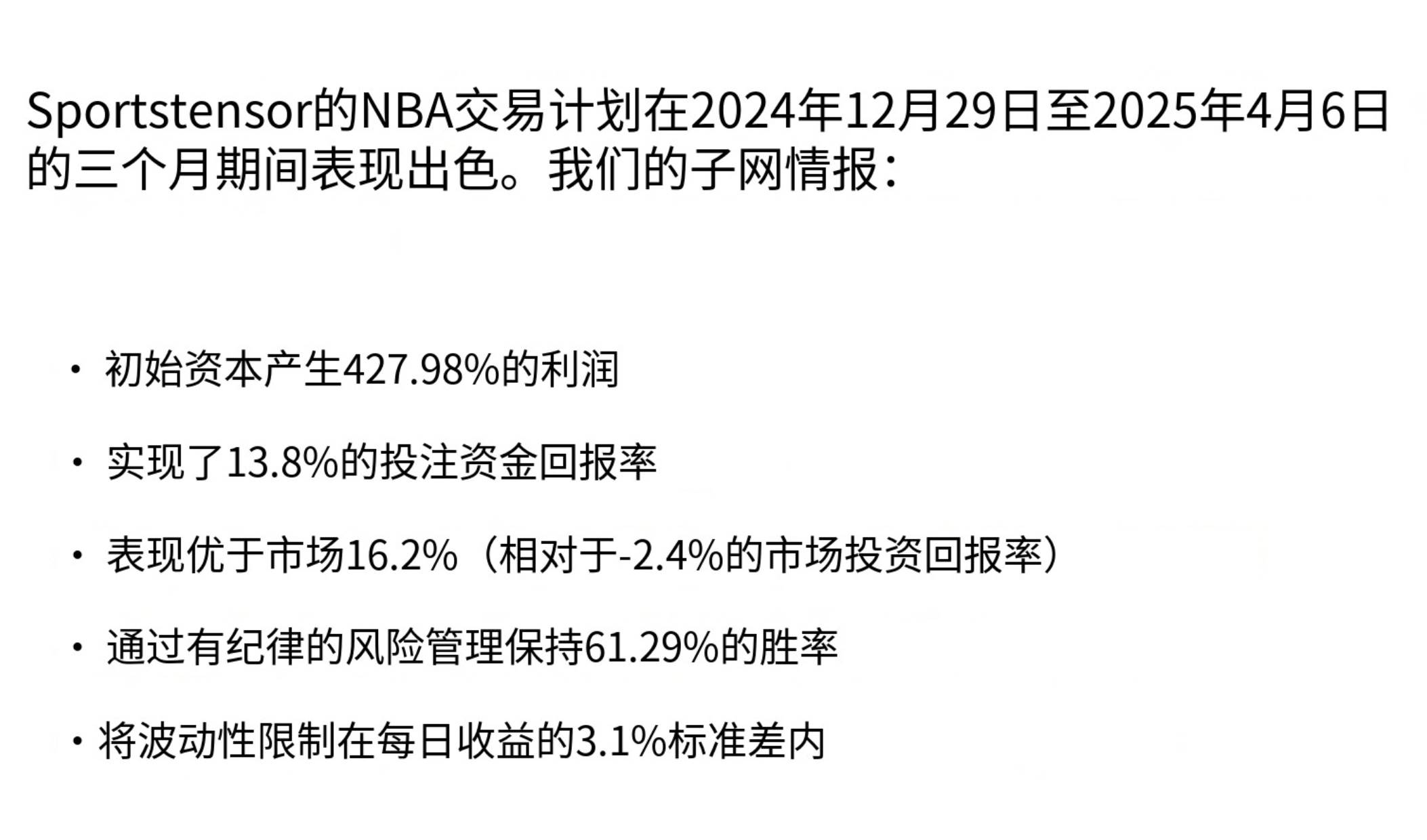
Source: Sportstensor, translated by Deep Tide TechFlow
Check out their full trading report (if you want to dive deeper): this is the model result they shared in their latest report. The numbers are quite impressive. The team also operates a betting fund monthly, starting with $10,000 as a buffer, using profits to continue smart betting. At the end of the month, they will use the profits to buy back their Alpha tokens. The team made about $18,000 in profit in March.
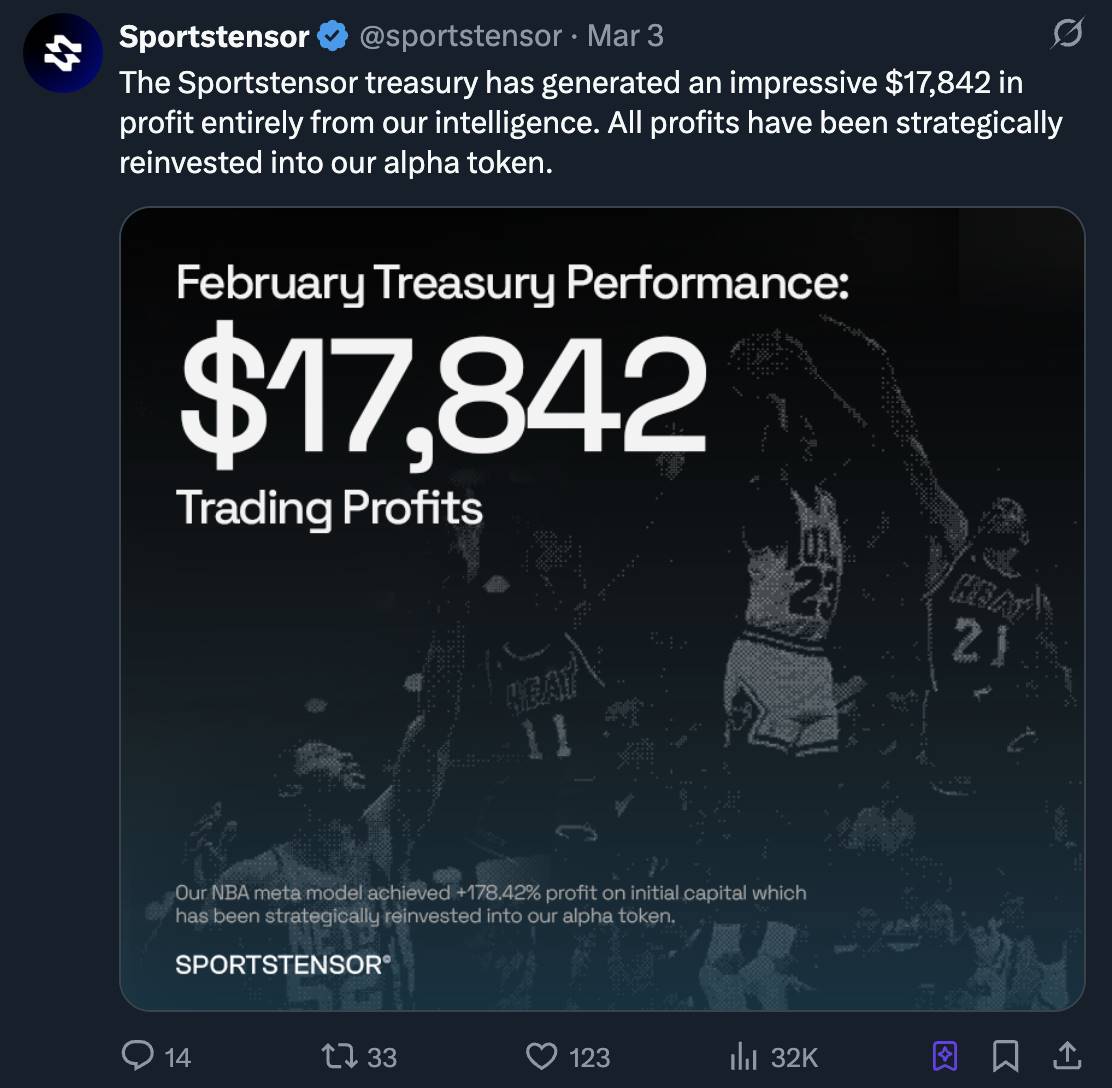
Depending on how you use the intelligent system, the results can vary significantly. For example, the intelligent system shows odds of 35:65, while the actual odds in the market might be 40:60. Someone might bet in this case, while you might not, due to the small gap and insufficient advantage. Billy's use of the intelligent system differs from Sportstensor's use. (Currently, no one knows how to consistently achieve positive returns on investment, as this field is still in a very early stage.)
Sportstensor plans to further monetize their intelligent system by creating a dashboard that allows users to easily understand the insights and make betting decisions accordingly.
I personally like this team because their product has many development directions. We have already seen Billy attract significant attention in this way, making sports fans excited about betting alongside Billy. As the team covers many sports, the agent can change the atmosphere, interaction, and betting methods for people in various ways.
SN44 @webuildscore
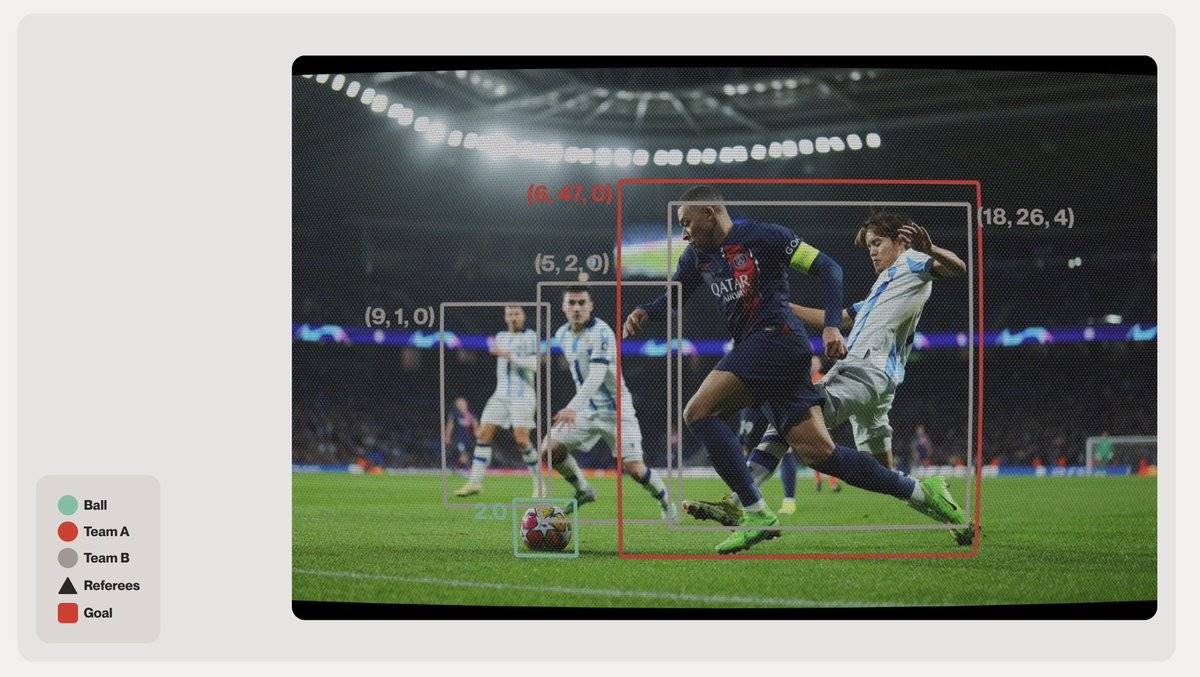
Score initially attempted to build a system similar to Sportstensor but shifted to the field of computer vision after realizing that the ability to predict future events holds greater value. To understand this, you need computer vision to analyze what is happening on the screen, allowing AI to understand the objects on the screen, locate them, and label the data, then draw conclusions through different algorithms (for example, the probability of a player making a specific move) and convert all of this into a universal score to enhance player performance and identify talent early.
Miners compete to label objects (this is the primary goal of miners). Score currently uses their internal algorithms to draw conclusions.
When you rate players (similar to setting Elo for chess or League of Legends, but more detailed and dynamic, changing based on player decisions and their impact in each game), club owners can do many things, such as discovering talent at a young age. If you have video footage of your child's game, you can use the same method as in professional matches. This quantifies the entire football world in the same way.

Through proprietary data, Score can monetize the ratings and insights, selling them to data brokers, club owners, sports data companies, and bookmakers.
For consumer applications, Score is taking different measures.
@thedkingdao is a sports hedge fund DAO and one of Score's clients, using Score data for the development of betting models and converting them into actionable betting decisions. The v2 terminal will be launched tomorrow (users will be able to access the full model through different subscription models, from match analysis to asking advanced fund management questions, i.e., the best betting partner, using agents to formulate their own strategies). Users can lock funds in the Vault product, and agents will automatically place bets, providing returns from the bets, expected to launch next month or before summer.
Soon, people will be able to upload videos on Score's self-service platform, where miners will label them. Typically, football match footage takes several hours to label, while miners can label a 90-minute match in just 10-12 minutes, which is much faster than elsewhere. Users can use the labeled data for their own models and applications.
I personally like Score because it can be applied to other fields beyond sports, such as autonomous vehicles, robotics, etc. In a world flooded with garbage data, high-quality proprietary data is in high demand.
SN18 @zeussubnet
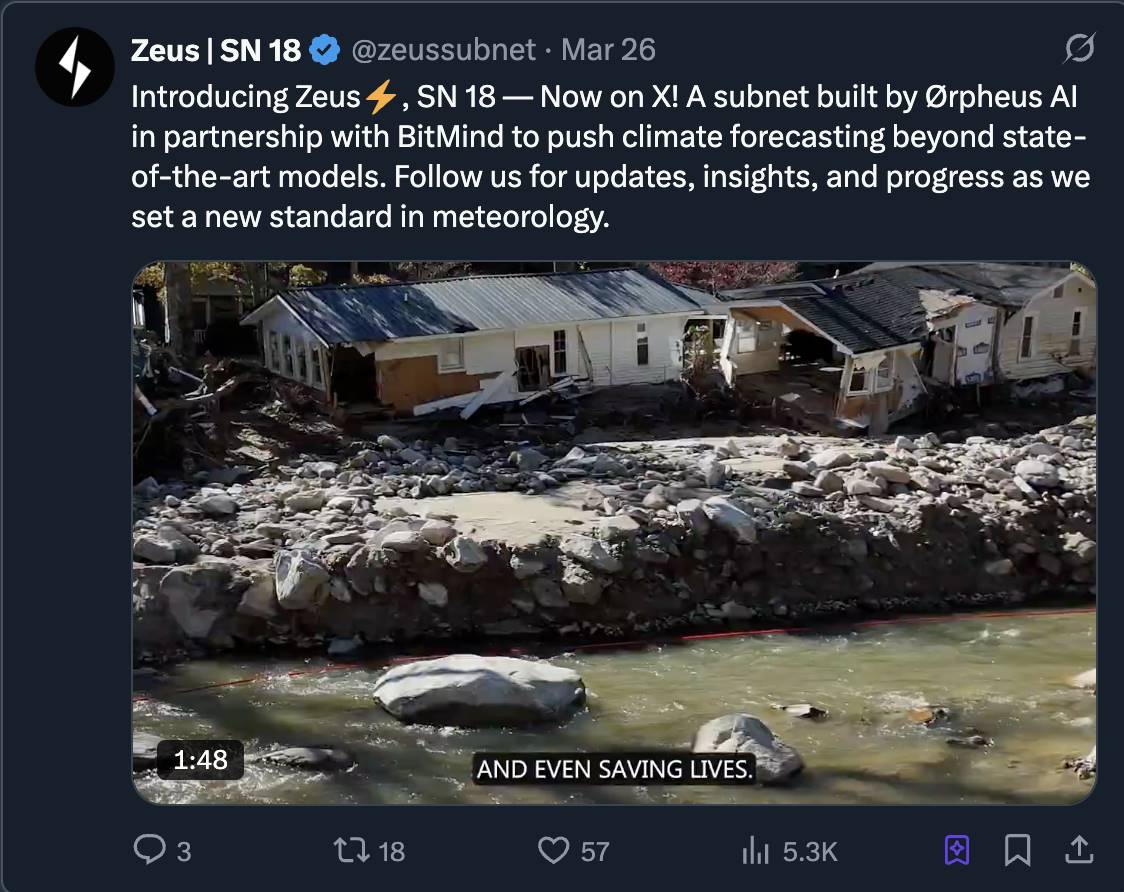
This is a new subnet that has recently gained a lot of attention. I have not had the chance to communicate with the team, but the product is very interesting.
Zeus is a machine learning-based climate/weather prediction subnet aimed at surpassing traditional models with faster and more accurate predictions.
This intelligence is highly sought after by hedge funds, as accurately predicting the weather can better forecast commodity prices (hedge funds are willing to pay millions for this intelligence because if they succeed in commodity trading, they can earn hundreds of millions).
The Zeus subnet is relatively new, as they recently acquired subnet 18. The Alpha token has increased by 210% in the past seven days.
Other subnets I am interested in but have not yet delved into include:
@404gen_ SN17 — Infrastructure for generating AI-generated 3D assets. Creating 3D models for games, AI characters, virtual streamers, etc. Recent integration with @unity may enable seamless 3D model generation, transforming the creative process for Unity's 1.2 million monthly active users.
@metanova_labs SN68 — DeSci drug discovery subnet, transforming drug discovery into a collaborative high-speed competition, addressing traditional challenges such as cost and time (the traditional process can take over a decade and cost billions of dollars).
There are many other subnets, and I will share more once I have the opportunity to delve deeper. I started with those that are easiest to understand (as I am not a technical person).
Summary
I try to avoid being overly technical. There are many excellent resources available for technical explanations regarding the entire dTAO, emissions, incentive distribution, and all stakeholders.
Based on what I've learned during the agent season (from October 24 to now), I believe it is very important to remain flexible. I have held investments in too many projects, and I think dTAO provides a pretty good mechanism for flexibly transitioning and exiting different investable DeAI startups.
Currently, there are not many participants, so users can experience annual percentage yields (APY) of 80%–150%+, along with rising subnet prices. This dynamic may change in the next six months as more people join and the TAO ecosystem develops better bridges, wallets, and trading infrastructure.
For now, I recommend enjoying the TAO PvE season and learning more about the cool DeAI technology with me :D
Thank you for reading my first article. I look forward to seeing everyone again in the next one!
免责声明:本文章仅代表作者个人观点,不代表本平台的立场和观点。本文章仅供信息分享,不构成对任何人的任何投资建议。用户与作者之间的任何争议,与本平台无关。如网页中刊载的文章或图片涉及侵权,请提供相关的权利证明和身份证明发送邮件到support@aicoin.com,本平台相关工作人员将会进行核查。




